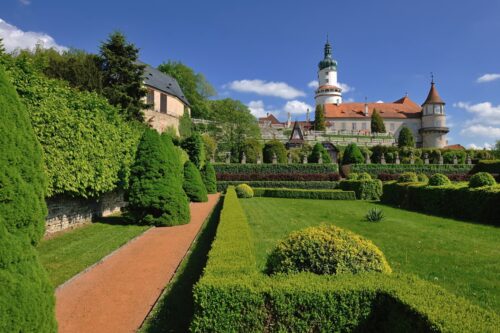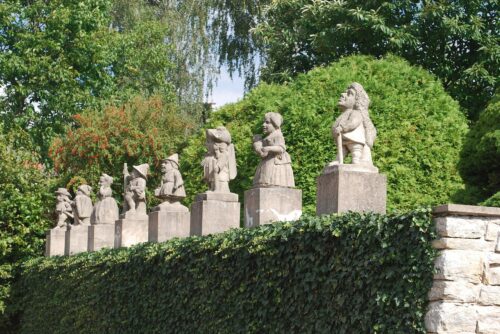Explore Nové Město
Explore Nové Město. The district of Nove Mesto is to a large extent sidelined by the majority of tourists. However, the area has a lot to offer besides Wenceslas Square and the National Museum. First of all the amazing National Theatre at the western end of Národní třída (National Ave) spans from the upper end of Wenceslas Square to the southwest.
Right on the Vltava waterfront this Neo-Renaissance jewel, created between 1868 and 1881 by Czech architect Josef Zítek (Josef Schulz who created the equally impressive Neo-Renaissance landmark of the National Museum was his student and assistant), adorns Prague’s cityscape with its gleaming golden roof, its Corinthian columns, and wonderful statues.


The building became one of the strongest symbols of the Czech national revival when the Viennese government refused to answer the request for financial support in 1848, in order for a Czech National Theatre to be established. Despite Austrian reservations, Czech citizens were more than happy to contribute to the cause of its creation, not once but twice in a short period of time, since the theater was completely destroyed by a fire just days after its inauguration in August of 1881.
A new national effort that started immediately managed to collect a sufficient amount of money and Josef Schulz was assigned to the work of reconstruction that was completed 2 years later. Today the beacon of Czech culture offers a number of drama, ballet, and opera performances.
The lavish interior, the striking auditorium, and the painted ceiling create an unforgettable ensemble that can guarantee an in-lifetime experience. Part of the National Theatre institution, home of the successful theater company Laterna Magica as well as other original projects are housed in the modern theater building created in the 1980s, the New Scene (Nová scéna) right next to the eastern side of the National Theatre.
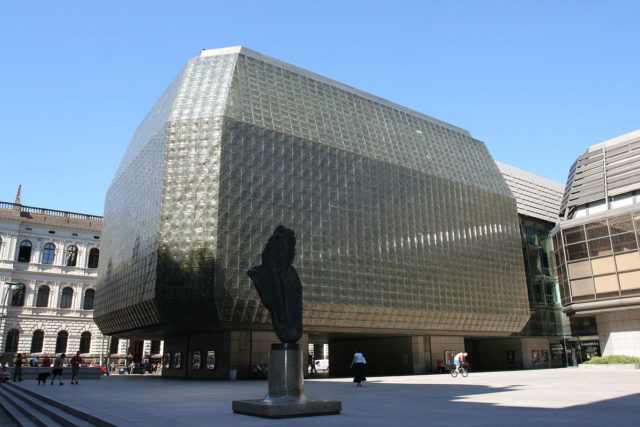

Constructed by more than 4.000 blown glass blocks, the futuristic form of the building, drastically changed the appearance of the Neo-Renaissance street and is still to this day, one of the most debated-about buildings in Prague. The New Stage is open to both Czech and international audiences and the programming meets the needs of both audiences. Opposite the National Theatre, on the corner of Národní Street and Smetanovo nábřeží is one of the most famous cafes of the city, Kavárna (Cafe) Slavia.


Café Slavia was established in 1884, just after the opening of the theatre, and instantly became a meeting place for artists and intellectuals. From Franz Kafka who in the fall of 1911 made his philosophical debates about the nature of Central-European -Jewish culture up to the 1960s and directors like Miloš Forman (One Flew Over The Cuckoo’s Nest & Amadeus).
It is believed that there is no intellectual that lived in Prague in the last century that hasn’t spent some time at the Art Nouveau (until a renovation in the 1930s) & then the Art Deco interiors of this place. A special notion must be made for the sculpture of King Wenceslas sitting astride on his upside-down horse dangling from the ceiling, the work of the controversial Czech artist David Cerny who is also responsible for giant babies crawling up the telecommunication tower.
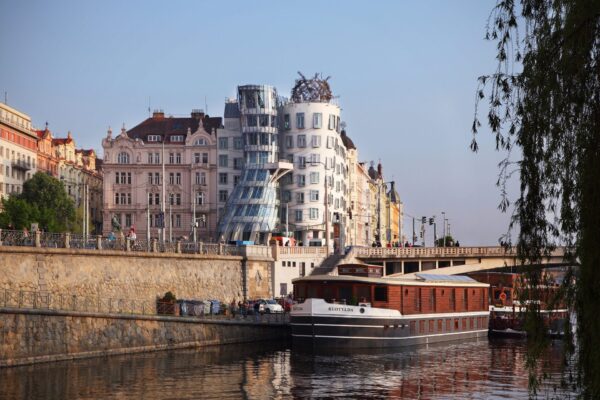
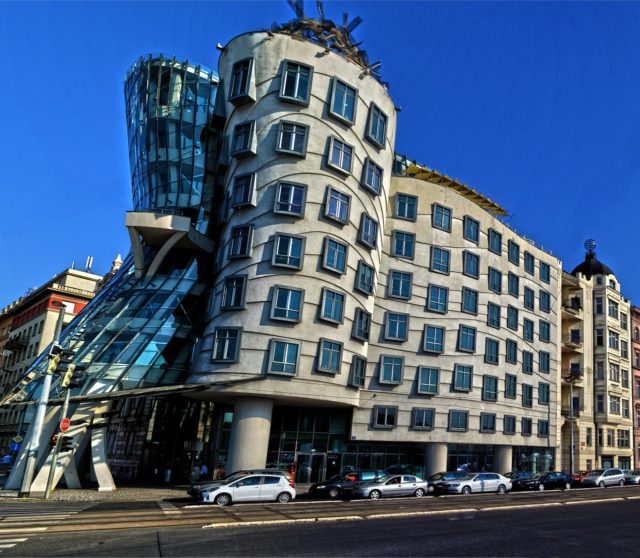
A few blocks south of Café Slavia, at the end of the riverfront avenue of Masarykovo nábřeží, where the Jirásek Bridge (Jiráskův most) connects Jirásek Square with Dientzenhofer Garden in Smíchov, lies the iconic Dancing House or Tančící dům aka Fred and Ginger if you prefer it.
Designed in 1992 and completed in 1996 for the Dutch insurance company Nationale-Nederlanden at a site of a house destroyed by the U.S. bombing of Prague in 1945 this de-constructivist, the dancing-like house has managed to capture the tourist interest with its wavy shape. The only way to enjoy what the building has to offer is with a visit to its top floor, the only part of the building that is open to the public, at its high-class Fred and Ginger Restaurant, along with the magnificent views over Prague offers its exquisite cuisine for everyone to enjoy.
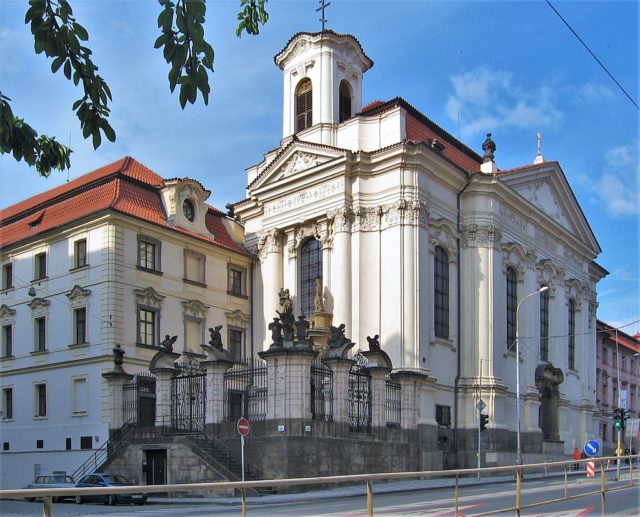
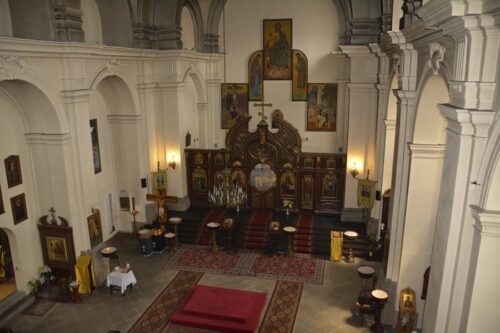
Moving west across Resslova St. about half the distance between the Dancing House and Charles Square (Karlovo náměstí), (west end of the street) lies the baroque Cathedral Church of Saints Cyril and Methodius (Katedrální chrám sv. Cyrila a Metoděje).
Built between 1730 and 1736 in honor of Saint Charles Borromeo (archbishop of Milan 1564 – 1584 and one of the leading figures of Counter-Reformation), the church still retains the frescoes depicting scenes from the legend of St Charles despite the fact that in 1935 it became the seat of the Christian Orthodox Church and was consecrated to Saints Cyril and Methodius.
The Orthodox Cathedral was deeply inscribed in Czech historic memory when a small number of Czech and Slovak paratroopers who had previously assassinated the Reich governor of Bohemia used it as their last hiding place. A few hours before changing their hide-out, they were betrayed and attacked in the church by the Gestapo and SS.
After three hours of fighting the parachutists used their last bullets to take their own lives. On a wall crypt, where you can still see the bullet- holes, there is the memorial plaque with the names and portraits of the Czech heroes. It is also known as the National Memorial Of The Heroes of the Heydrich(the Reich governor) Terror.
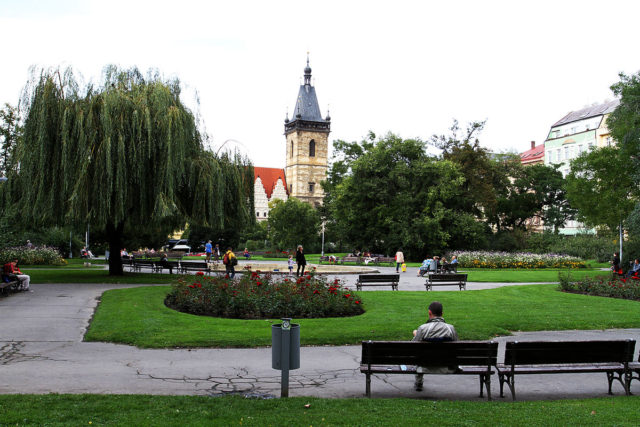
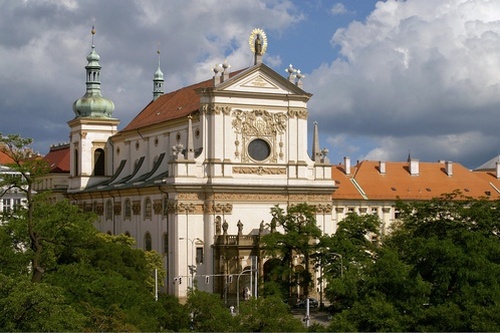
A breath from the Orthodox Cathedral to the west lies the 70,000 m² Karlovo náměstí (Charles Square), one of the largest city squares in the world. The early-Baroque Church of St. Ignatius with the original Nove Mesto Jesuit College, one of the largest Jesuit complexes in Europe stands on the western side of the square.
On the north side of the square lies the Renaissance Nove Mesto Town Hall, where the First Defenestration of Prague took place. A climb to the top of its 70 meters tower can offer great views of the city and Karlovo Square. Inside there is also a permanent exhibition about the history of Nove Mesto. On the south side of the square, the mysterious Faust House aka Mladota Palace, a Baroque mansion with numerous legends surrounding it completes the ensemble.
